Oman’s Ancient Capital
We awoke in the middle of the desert, in a flat rocky wash, inside a humming white Toyota Previa, air-conditioning gently whispering, sun shining brightly in the window, just peeking through the loosely woven threads of the Cambodian krama wrapped around my face. We were in the vicinity of what appeared to be a gigantic abandoned residential development project outside of Nizwa, the ancient capital of Oman. I unwrapped the krama and squinted in the morning’s bright desert sun.

We pulled ourselves out of the car and stretched in the warm morning air. I kneeled down to unlock the bikes and Claudia began to brush her teeth. Just another morning at the Hotel Previa. It had been a peaceful night, and we were feeling well rested and excited to explore Nizwa.
Nizwa is one of the oldest cities in Oman. It was the capital of the country roughly between 500 and 700 AD and was rumored to be an interesting mixture of new and old. We were quite excited to wheel the place. The city is also a religious center, with many historic mosques. We were visiting on a Friday, which meant much of the city would likely be closed down to observe the holy day. This meant traffic would be light, which was good. We just hoped someone would be serving a lunch-type meal.
Cycles loaded into the Previa, we crunched over the gravel and climbed back onto the road. I pulled my seat belt around me with one hand, cracking a Red Bull with the other. There were no cars or signs of life for miles around us. We traced the last night’s steps back to the main highway into Nizwa. Jackson had, despite application of sunscreen, been sunburned the previous day, and so as we pulled into Nizwa center we offered him some of our newly received UV protective arm sleeves, compliments of our good friends at Speed Matrix and My Bike Shop in Singapore. Needless to say, Jackson was ecstatic to be so well protected against the harsh desert blaze.
On we drove, into the ancient city. We could see signs that it had at one time been quite imposingly fortified, though now large chunks of the city wall had been cut to allow cars to enter and exit. We parked in a large lot on the periphery of the city center, not far from a round-about with a very interesting sculpture dedicated to books, and climbed out.
We used the bathroom at a nearby shop, Jackson brushed his teeth, and Scott and I began unfolding the cycles. Food would be the next goal, but first we needed to do a little bit of reconnaissance. Most of the city seemed closed for business, but Claudia headed over and began interrogating a large confident man in a white flowing robe about where a few folding cyclists might get a little grub.

The man seemed very friendly and gave us directions to an eatery not far off. On our way there, though, we could not help noticing the startling concentration of jewelry shops in this town. To bolster our fake marriage, Claudia and I had begun wearing wedding rings, knowing that the Hotel Previa would not be around forever. Unfortunately, Claudia’s ring had been giving her a massive allergic reaction, so we were in the market for a new cheap ring.
It only took a few shops to eventually find the type of Omani jewelry merchants we were looking for (those that dealt in fake precious metals), but even they were not offering quite the right fake wedding ring, so as the hunger began to groan ever louder in our stomachs, we headed out empty-handed in search of the aforementioned restaurant.
It proved somewhat difficult to locate, so we decided to ask once again. The next man we asked was extremely helpful, offering to lead us there. So we followed behind his stern march and flowing garment, right to the door of the place. We headed toward the back, where we took a seat on a large and intricate carpet. We ordered a few dishes and soon they arrived on a stainless steel platter that our waiter set down in the center of the carpet.
The food was medium by Omani standards, which are pretty high. I believe the place was more of a tourist restaurant, which explains why it was open on the holy day. Regardless, we felt quite good leaving the joint and quite excited to wheel the ancient capital.
So we hopped on the cycles, heading first across a large central canal, which I assume sometimes flows with water. It was dry as a bone then. From there we headed into an older and more residential part of the city. From time to time, we saw people, but for the most part, the city felt like a ghost town with all the inhabitants either at the mosque or inside their homes, hiding from the midday heat.
Between the protection of our Panama hats, the UV arm bands, and the increased aeration we got from wheeling, we were quite able to handle the heat.
And so we headed on, ducking at times onto crumbling gravel roads, and then back onto the main streets.
We met some folks driving in a Nissan pickup, with a few children in the back. The kids were absolutely thrilled to see AsiaWheeling, first simply dropping their jaws, then clapping their hands at us. The man who was driving them around was also quite interested, giving us a big grin as we rode by.
We made our way around the city, approaching the center from the other side, eventually making our way back through the main (somewhat deserted) souk (Arabic for market), and across that same bone dry wash that bisected the town. We were by this point quite thirsty and interested in water. Finding an open shop that was serving water was not easy, but after perhaps 15 minutes of wheeling around, find one we did.
It felt great to pour the life-giving elixir down my throat. I had no idea how dehydrated I had become, and once we had finished our bottles, we quickly purchased another four liter-and-a-half-sized bottles and headed back to the Previa. She had managed to heat up to quite an interior temperature in the midday sun, so the first bit of driving was kind of like piloting a self-cleaning oven, but soon the air-conditioning, coupled with open windows got the better of her, and we pulled back onto the road for Muscat.
As we drove, we began to see signs for a nearby cave and decided that it might make a good intermediate waypoint on our journey to Muscat. So we pulled off onto a gravelly side road, but soon the signs for the cave disappeared. So we stopped the car and began to take stock of where we were. There was a large cliff ahead of us, on which what looked like an ancient crumbling and abandoned walled city stood.

The cliff itself was gouged with long deep pits that might have, to a creative Omani tourism official, constituted caves. To the side of the cliff was another small oasis, instantly apparent by the green shrubs and trees that stuck out so starkly against the dry beige of the desert.
We decided first to go explore the so-called caves. The sandy area at the base of the cliff showed plenty of evidence of humans spending time here. Bones from meat, containers, and curiously enough, a fair number of liquor bottles littered the ground. Most disturbing were the bodies of a number of dead dogs, which also seemed to have found their way to this bizarre location.

We climbed around on the rocks, eventually finding a small sheltered body of water, which may or may not have had its origins in the Omani sewage system.
We decided to head back to the cycles and wheel up onto the plateau above the cliff where the abandoned city was. Â Before exploring the city, we took a quick wheel around it, skirting its perimeter and attempting to ascertain whether it was a no-trespassing zone. No evidence to that effect presented itself. On our ride, we encountered few humans, though we rode through a number of new housing projects. We did at one point have to break up a small soccer game taking place in the road, but except for those kids, we were the only ones on the road.
We looped back around and parked the cycles, hoisting ourselves over a crumbling dry mud and stone wall and into the abandoned city. The city itself was amazing. It had not been occupied for some time, and was certainly in a state of ruin, but there was enough evidence that one could still easily imagine it in its prime.
We spent some time, wandering the area, climbing on walls, entering and leaving the buildings, and, with no small bit of trepidation, exploring some of the more solid looking second and third story rooms.
Inside the structures, one could just barely make out the colorful tiles that had been used to decorate the interior of these houses. Though they were now just crumbling mud and stones, these buildings had once no doubt been quite impressive. Lavish even.
As we climbed back over the wall, we were met by a man in an expensive SUV. He pulled up, giant engine purring, and down hummed his electric window. He introduced himself, and asked us where we were from. He explained to us that this abandoned city had been occupied not 50 years ago, and only now with the new influx of oil-related money into Oman had all the occupants finally moved out and the city fallen into this kind of permanent disrepair. Fascinating.
We explained to him a little bit about our trip, and the countries we’d visited to far. We were starting to rack up quite a list by this point, and it seemed we had crossed the line: the number of cities we’d visited had begun to outnumber the names of those we’d yet to see. The gentleman seemed very supportive, wishing us safe travels before driving off into the sun.
We headed back toward Muscat, enjoying the craggy landscape and the large mostly empty, and immaculately clean and smooth highways, and the album “The Bee’s Made Honey in the Lion’s Skull†by Earth, which I dare say is very good for this landscape.
And then we were suddenly in Muscat. Traffic was not bad, and we followed signs toward the city center. Parking also was not too tough, and we found a free spot in a back alley behind a restaurant.
We unfolded the cycles right there and then and headed out in search of food. The sun was just beginning to set, and the temperature was falling to that of a comfortable evening stroll. The people of the city seemed to have been of the same mind, for as we rode, the streets began to fill with pedestrians.
We wheeled on for some time, before finding a Lebanese restaurant which, for one reason or another, seemed inviting. We headed up, and the owner, who spoke quite passable English, was more than happy to offer our cycles a spot inside the restaurant to save them from further rapscallioning.
The city of Muscat was gorgeous. Truly gorgeous.  And it looked no worse as the sun set and the lights of the city began to turn on. The architecture was like that of no other place I’d ever been. If Dubai is the epitome of reverence for the new, Muscat might be that of reverence for the old. Even obviously brand new buildings were erected in the style of the ancient ones here. Also obvious in the design of the city was the respect for Oman’s maritime tradition.
The sea and the port played a central role in the layout, and it seemed always just around the corner wherever you were.
The food was glorious: crisp salads, babaganouj, hummus, falafel, and leban, all accompanied by plenty of olive oil and stacks of piping hot flatbread.
With eating out of the way, we decided to go for a walk through a nearby market. There was certainly plenty of stuff for sale here, from antique maritime equipment, to jewelry, to hookahs, to cloth, to spices. In one of the shops, Claudia spotted the perfect faux wedding ring and we pounced on it.
We spent quite some time chatting with a spice trader there, who had been trained by his father in the blending and trading of all manner of spices, ouds, and fragrances.
He would put out a large glass jar full of colorful shapes and ask us to have a smell. “Now there are some 23 odd spices in here… can you name them?†And we would get the first five right off the bat, then struggle furiously with the next seven, then give up. He was quite a chap, and quite a salesman. For anyone visiting Muscat, a visit to his shop is highly recommended.
Back on the streets, we continued to wheel for a while until exhaustion overtook us and we pulled an uber- lichtenstein back toward the car.
We parked that night in the back lot of a very expensive housing development in Oman, wandering around behind a set of no doubt fantastically expensive shrubs to urinate and brush our teeth, then locking the bikes to a streetlight, and parking the Previa right beside them. Â After a round of trivia, it was time for a good rest.
![]()



































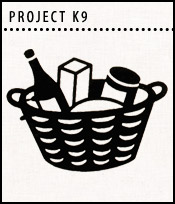
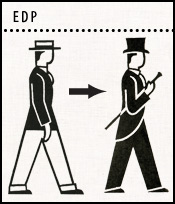
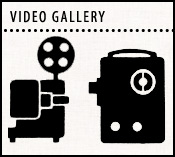
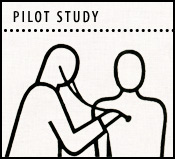
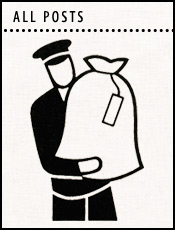
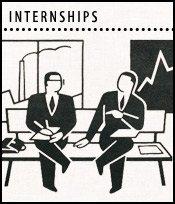




Comments
I’ll tell you who’s photogenic: Mr. Jackson Fu.
If you’re ever looking for a nice shower and change from the Hotel Previa (blasphemy, I know), there’s a few quite decent hotels right along the corniche which should only set you back $30 or so, for a room. I wish I could remember what mine was called… in any case, I love reading this and am so jealous you’re in Muscat — one of my favorite cities!
What are you saying about the hotel Previa?
I had sort of gotten used to Woody filming 360 degree pans while riding a bicycle, but now I have to make room for filming while driving!